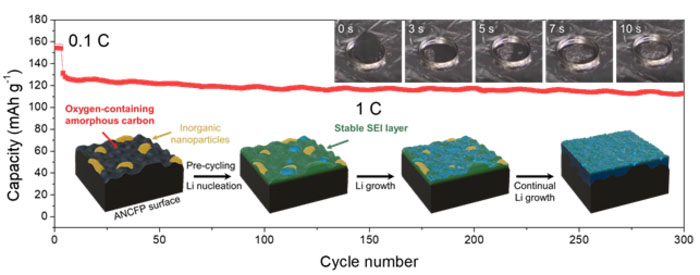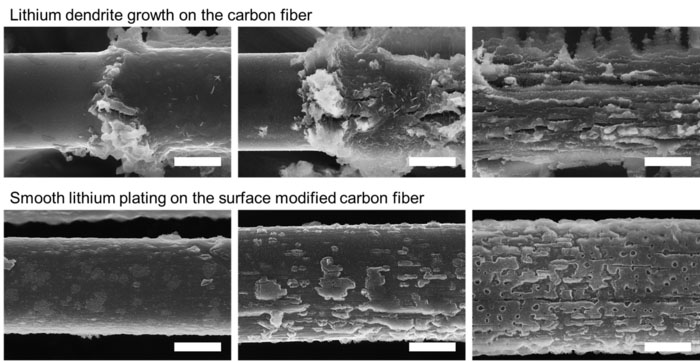| Mar 27, 2023 |
Carbon fiber paper for for longer-lasting electric vehicle batteries
(Nanowerk News) Owing to the global trend of utilizing electric vehicles, there has been a surge in demand for next-generation secondary batteries with higher capacity and faster charging than the lithium-ion batteries currently in use. Lithium metal batteries have been recognized as promising rechargeable batteries because the lithium metal anode exhibits a theoretical capacity ten times higher than commercial graphite anodes. However, during charging and discharging processes, lithium dendrites grow on the anode, leading to poor battery performance and short-circuits.
|
|
Dr. Sungho Lee, Head of the Carbon Composite Materials Research Center at the KIST Jeonbuk Institute of Advanced Composition Materials, and Professor KwangSup Eom of the Gwangju Institute of Science and Technology have developed a technology to improve durability by using carbon fiber paper as the anode material for lithium metal batteries.
|
|
The team published their findings in (Advanced Energy Materials, "Construction of Hierarchical Surface on Carbon Fiber Paper for Lithium Metal Batteries with Superior Stability").
|
 |
| Schematic illustration of lithium growth behaviors on a carbon fiber paper with hierarchical structure, and photograph of the molten lithium infusion into the developed carbon fiber paper. (Image: KIST)
|
|
The KIST-GIST joint research team replaced the lithium metal-coated copper thin film with a thin carbon fiber paper containing lithium metal. The developed carbon fiber paper had a hierarchical structure on the carbon monofilament, composed of amorphous carbon and inorganic nanoparticles, which enhanced lithium affinity and prevented lithium dendrite growth.
|
|
While copper thin film anodes short-circuit after approximately 100 cycles, the developed carbon fiber paper anode exhibits excellent cycling stability for 300 cycles. Furthermore, lithium metal batteries using the developed carbon fiber paper show a high energy density of 428 Wh/kg, approximately 1.8 times higher than that using copper thin film (240 Wh/kg).
|
 |
| Images showing the effect of lithium plating on the pristine carbon fiber paper and surface modified one. (Image: KIST)
|
|
From a process standpoint, another advantage is the simplification of the electrode manufacturing process, as molten lithium quickly infuses into the carbon fiber paper.
|
|
Regarding the significance of this research, Dr. Sung-Ho Lee, Head of the Center at KIST, who led the research, said, "Considering the five times lower density and lower cost of carbon fiber compared to copper, our proposed anode material is an important achievement that can accelerate the commercialization of durable and lightweight lithium metal batteries."
|


